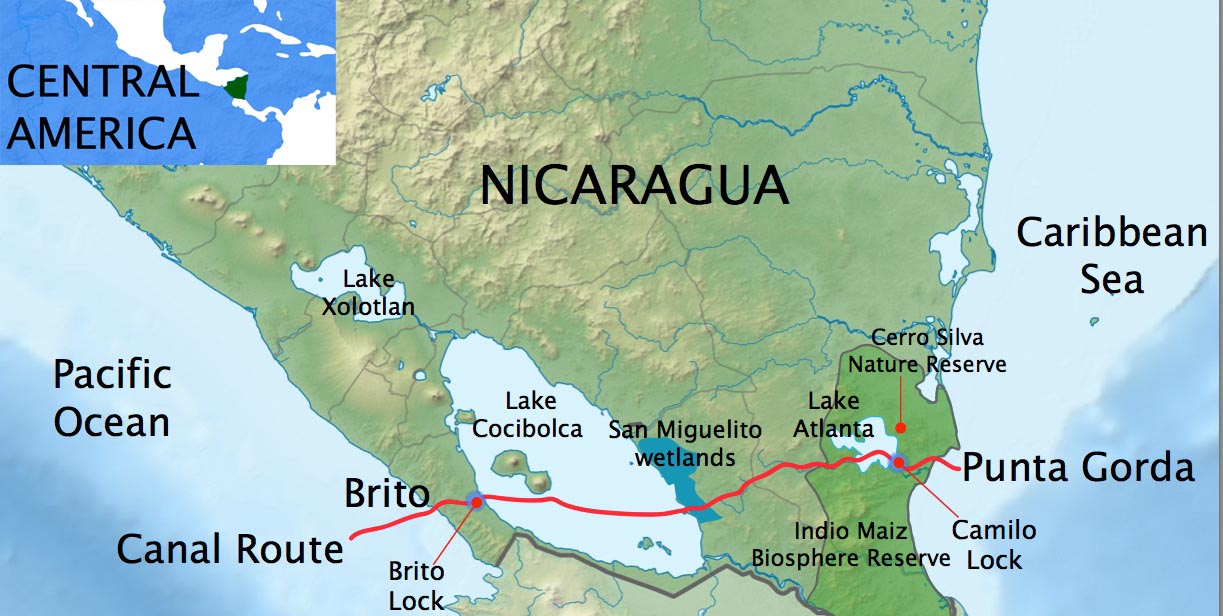TEPIC, Mexico, (Thomson Reuters Foundation) – Shaking off its climate change “pariah” status alongside the United States and war-torn Syria, Central American nation Nicaragua took the plunge and joined the Paris Agreement to tackle global warming before U.N. climate talks began yesterday.
But environmentalists say Nicaragua’s lecturing of big polluters and ambitious renewable energy goals contrast with its slack environmental protection and a controversial plan to carve out a $50 billion Chinese-backed shipping canal from coast to coast with potentially severe impacts.
“The government talks a lot about respect for ‘Mother Earth’ and care of the environment. But that is just political rhetoric – in practice, the government is too lenient on environmental contamination,” said Jorge Huete-Pérez, University of Central America professor and vice president of Nicaragua’s Academy of Sciences.
In 2015, Nicaragua was the only one of about 195 countries to reject outright the Paris deal, which it deemed too weak to keep global temperature rise below 2 degrees Celsius above preindustrial times, as well as unfair for holding poorer nations to account in the same way as developed countries.
But ahead of the annual U.N. climate negotiations taking place in Bonn, Nicaragua said the pact aimed at reducing planet-warming emissions was the only international mechanism that could turn the tide on climate change.
Being in the accord could give the country of 6 million a better chance to ramp up pressure on industrialised nations for more climate action, said experts.
Liane Schalatek, associate director at the Heinrich Böll Foundation North America, said Nicaragua’s change of heart indicated it did not want to be associated with U.S. President Donald Trump’s aim to renegotiate the Paris Agreement.
“It really narrows the circle of climate pariahs to two countries,” she told the Thomson Reuters Foundation.
Some believe Nicaragua’s U-turn, recent weather disasters and growing Chinese and Indian climate leadership combined may have a slim chance of nudging Trump back to the pact he said the United States would leave because it would harm the economy.
“I’m hopeful the U.S. administration understands… the degree to which climate is one of the overwhelming priorities in the international agenda, along with issues such as security and trade,” said Paula Caballero, global director of the World Resources Institute’s climate programme.
Ranked as the second-poorest country in the northern hemisphere, heavily deforested Nicaragua is one of the region’s most vulnerable to disasters – hit regularly by storms, floods, droughts and earthquakes.
The decision by President Daniel Ortega, a former Marxist guerrilla leader, to join the Paris Agreement could help funnel more cash into green energy and other development projects in Nicaragua which once received subsidised Venezuelan oil.
Lauded by the World Bank as a “renewable energy paradise”, Nicaragua generates over 50 percent of its power from geothermal, wind and other clean sources, with plans to reach 90 percent.
Raul Delgado, lead climate change specialist at the Inter-American Development Bank, said joining the Paris accord could open the door for Nicaragua to access money from the Green Climate Fund and other international pots. “It’s a good time for them to join,” he added.
Some said the timing fits with the expected appointment next year of Nicaragua’s chief climate negotiator Paul Oquist to the influential co-chair position at the multi-billion-dollar Green Climate Fund, where he is now an alternate board member.
Oquist, also a government minister, did not respond to requests for comment.
Environmentalists, however, point to a stark contrast between Nicaragua’s hardline climate stance on the international stage and weak environmental regulation at home, urging the government to halt deforestation, tighten controls on miners and help communities adapt to climate impacts.
Dozens of demonstrations have been held to oppose a planned 172-mile (278-km) Caribbean-to-Pacific canal, approved by the National Assembly in 2013. Campaigners say it would lead to mass evictions and destroy rainforest, wetlands and endangered species as it slices through protected and indigenous land.
Crossing Lake Nicaragua, the biggest in Central America, it risks widespread damage from dredging and contamination of the water on which many rely, they say. A key environmental impact report was superficial and flawed, they argue.
“It’s going to affect important ecosystems – there’s the fear that the lake water will become salinated, and also there’s the potential of accidents with the ships circulating in the area,” said Victor Campos, director of Managua’s Centro Humboldt, an environmental non-profit group.
“There’s no consistency between the political will shown at an international level and the steps they are taking internally,” he added.
Campaigners against the canal – designed to rival Panama’s – also say they have suffered violence and intimidation. Human rights watchdog Global Witness ranks Nicaragua as the most dangerous country for environmental activists per capita, with 11 killed last year.
“There does remain a considerable gulf across a number of countries between what they say (on climate change) and what they’re actually doing,” said Guy Edwards, a research fellow at Brown University.





